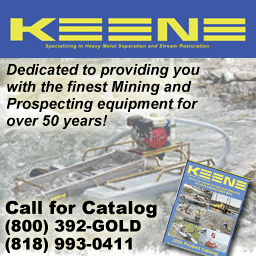Sulfides and Intergrain Gold Wire Nuggets
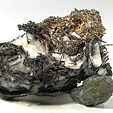 ...these nuggets have not traveled far from the lode because the golden wire lattices would have been torn apart or flattened during weathering of rock and deposition by violent stream action.
...these nuggets have not traveled far from the lode because the golden wire lattices would have been torn apart or flattened during weathering of rock and deposition by violent stream action.
$50 Million in Gold From 1857 Shipwreck Approved for Sale
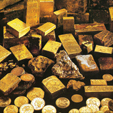 The gold is all for sale. Just one tiny coin alone could go for $1 million because of its combination of rarity and the history behind it...
The gold is all for sale. Just one tiny coin alone could go for $1 million because of its combination of rarity and the history behind it...
Bedrock Gold: When It’s There and When It Isn’t
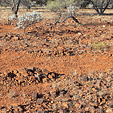 Has your experience ever led you to wonder why some gold is deposited on bedrock and in crevices, while other gold is not? We’re going take a deeper look at this and see what we can figure it out.
Has your experience ever led you to wonder why some gold is deposited on bedrock and in crevices, while other gold is not? We’re going take a deeper look at this and see what we can figure it out.
Mass Wasting & Gold Deposits
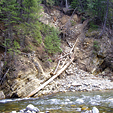 Not all of these slides and debris flows will produce results, but if you search for these while prospecting in your gold producing areas, then you can increase your odds of finding new gold.
Not all of these slides and debris flows will produce results, but if you search for these while prospecting in your gold producing areas, then you can increase your odds of finding new gold.
The Wild Rush to Find More Cobalt—Part I
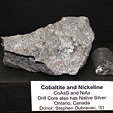 While some future cobalt will come from recycling lithium batteries and other products, the coming huge need for cobalt is virtually a perfect storm of heavy demand and insufficient supply.
While some future cobalt will come from recycling lithium batteries and other products, the coming huge need for cobalt is virtually a perfect storm of heavy demand and insufficient supply.
California: The Land of Big Nuggets—Part II
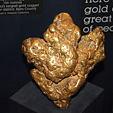 There are a number of Tertiary river channels in the area, most of which trend south-southwest. They tend to be steep, narrow, and rich with coarse gold.
There are a number of Tertiary river channels in the area, most of which trend south-southwest. They tend to be steep, narrow, and rich with coarse gold.
Third Largest Nugget in Existence Returns to Dallas
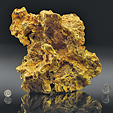 While the bullion value of the nugget is already substantial, the size and rarity of the Ausrox Nugget combine to make its worth invaluable in the collector market.
While the bullion value of the nugget is already substantial, the size and rarity of the Ausrox Nugget combine to make its worth invaluable in the collector market.
Butte, Montana—The Richest Hill on Earth
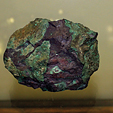 I recently had the opportunity to spend a day exploring around Butte, Montana and was amazed by the amount of mining that has taken place there. The old-timers called Butte “the richest hill on earth” and had pretty good reasons for doing so.
I recently had the opportunity to spend a day exploring around Butte, Montana and was amazed by the amount of mining that has taken place there. The old-timers called Butte “the richest hill on earth” and had pretty good reasons for doing so.
Conrey Dredge No. 4—Part II
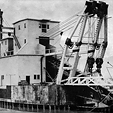 These were the men who periodically picked up the gold amalgam from the tables and sluices in the dredge, processed it, and transported the gold ingots to the railroad express office in Alder. Their trustworthiness must have commanded a prominent wage.
These were the men who periodically picked up the gold amalgam from the tables and sluices in the dredge, processed it, and transported the gold ingots to the railroad express office in Alder. Their trustworthiness must have commanded a prominent wage.
California: The Land of Big Nuggets—Part I
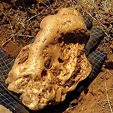 The nugget sat there in plain sight, though it was covered in dirt, while hundreds of people had passed that way every day.
The nugget sat there in plain sight, though it was covered in dirt, while hundreds of people had passed that way every day.
It Pays to Know Your Bedrock
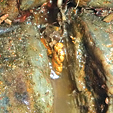 On our last trip, we brought ropes and went down the first waterfall forty vertical feet, only to be confronted by a second, sixty-foot-high, overhanging waterfall that emptied into a slot canyon.
On our last trip, we brought ropes and went down the first waterfall forty vertical feet, only to be confronted by a second, sixty-foot-high, overhanging waterfall that emptied into a slot canyon.
The Beatty Mining District of Nevada
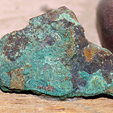 The Beatty Mining District in south-central Nevada has been one of the most productive Mining Districts in the state, producing millions of ounces of gold together with silver, fluorite, mercury and other valuable minerals.
The Beatty Mining District in south-central Nevada has been one of the most productive Mining Districts in the state, producing millions of ounces of gold together with silver, fluorite, mercury and other valuable minerals.
Flood Plain Gold Deposits—What Are They Really?
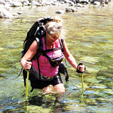 We just completed a trip to another river, and yes, there was definite movement and redistribution of gravels, and other prospectors have seen this as well.
We just completed a trip to another river, and yes, there was definite movement and redistribution of gravels, and other prospectors have seen this as well.
Exploring Iron Oxide Copper Gold Deposits
 The excitement over IOCG deposits began with the discovery of a monster deposit at Olympic Dam in Australia in 1976. The discovery was accidental as the operator was searching for strata-bound copper deposits.
The excitement over IOCG deposits began with the discovery of a monster deposit at Olympic Dam in Australia in 1976. The discovery was accidental as the operator was searching for strata-bound copper deposits.
Conrey Dredge No. 4
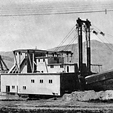 The large buckets were favorable for the type of ground worked. The gravel was tenacious and compact, due to the existence of irregular pockets of clay.
The large buckets were favorable for the type of ground worked. The gravel was tenacious and compact, due to the existence of irregular pockets of clay.
Kennecott Copper Mine, Kennecott, Alaska
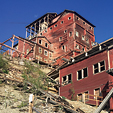 For approximately 30 years, the mines produced good ore, some so rich it was simply sent straight to bagging, bypassing milling and loaded directly on the rail cars.
For approximately 30 years, the mines produced good ore, some so rich it was simply sent straight to bagging, bypassing milling and loaded directly on the rail cars.
How to Recognize Hard Rock Gold Ores
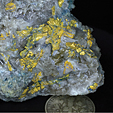 I regularly get inquiries along the line of: “Hey, I found this rock, and I think it might be gold ore. How can I tell?” Prospectors are always on the lookout for gold-bearing rocks that may be the source of any nearby placer gold.
I regularly get inquiries along the line of: “Hey, I found this rock, and I think it might be gold ore. How can I tell?” Prospectors are always on the lookout for gold-bearing rocks that may be the source of any nearby placer gold.
The Rochester Mining District of Nevada
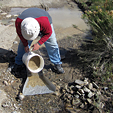 Only the richest ores could be worked and shipped off for processing at a profit. As a result, early mining in the southern part of the Humboldt Range was short-lived. In the 1880s, placers were discovered in Spring Valley and American Valley on the east side of the range...
Only the richest ores could be worked and shipped off for processing at a profit. As a result, early mining in the southern part of the Humboldt Range was short-lived. In the 1880s, placers were discovered in Spring Valley and American Valley on the east side of the range...
Simple Rules of Gold Geology: Comparing Epithermal and Mesothermal Deposits
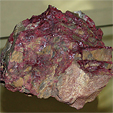 Geology is a science of general tendencies with frequent exceptions, not one of hard and fast rules that are always true and never vary. For almost every well-accepted rule of gold deposits, I can point you to a number of important exceptions.
Geology is a science of general tendencies with frequent exceptions, not one of hard and fast rules that are always true and never vary. For almost every well-accepted rule of gold deposits, I can point you to a number of important exceptions.
The Goldfield Mining District, Nevada—Part II
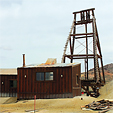 The majority of the gold produced in Goldfield has come from ores that are close enough to the surface to be oxidized by the air. This oxidized ore is normally a soft, shattered, earthy material usually stained yellow to brown by oxides of iron.
The majority of the gold produced in Goldfield has come from ores that are close enough to the surface to be oxidized by the air. This oxidized ore is normally a soft, shattered, earthy material usually stained yellow to brown by oxides of iron.

